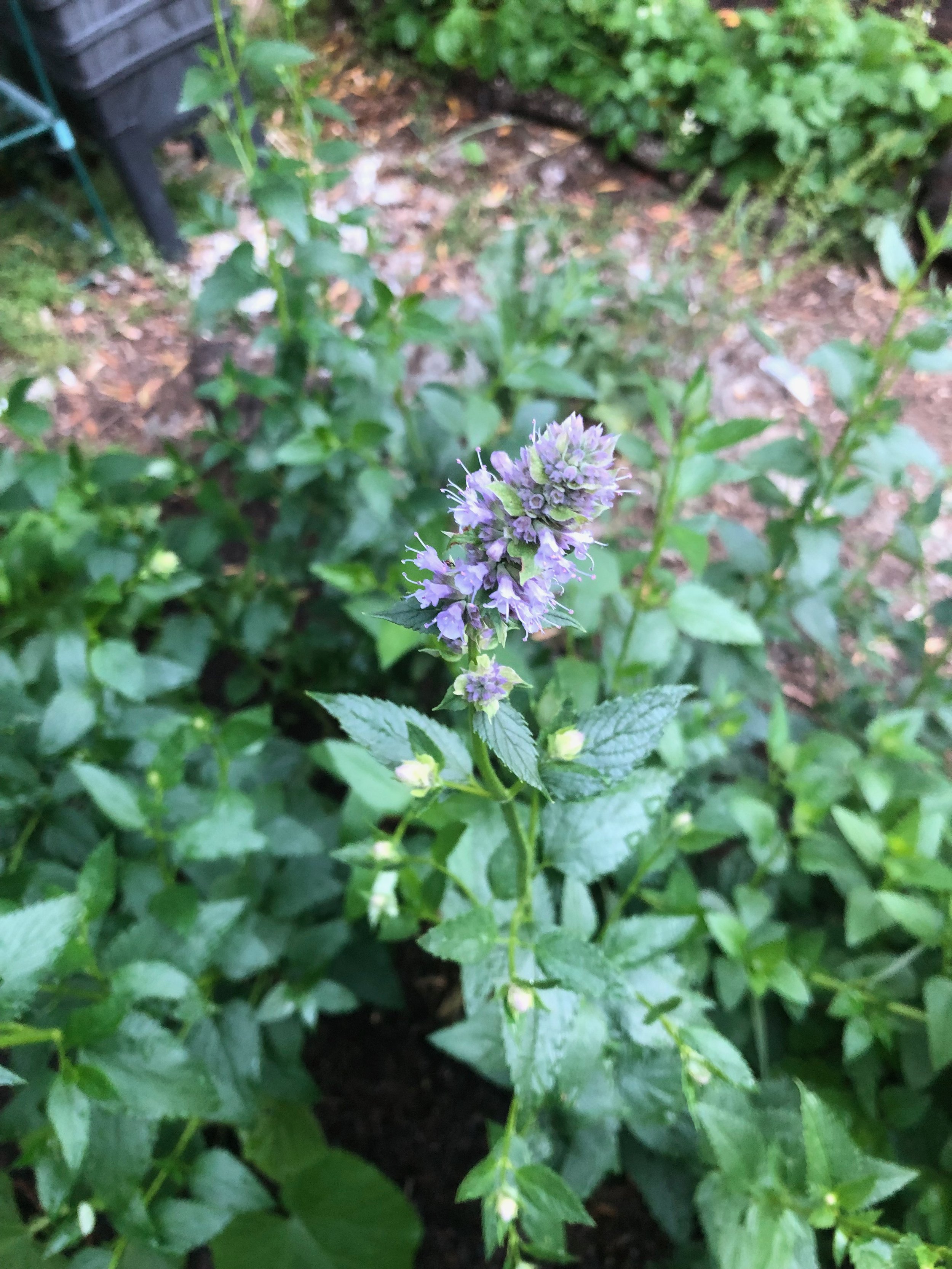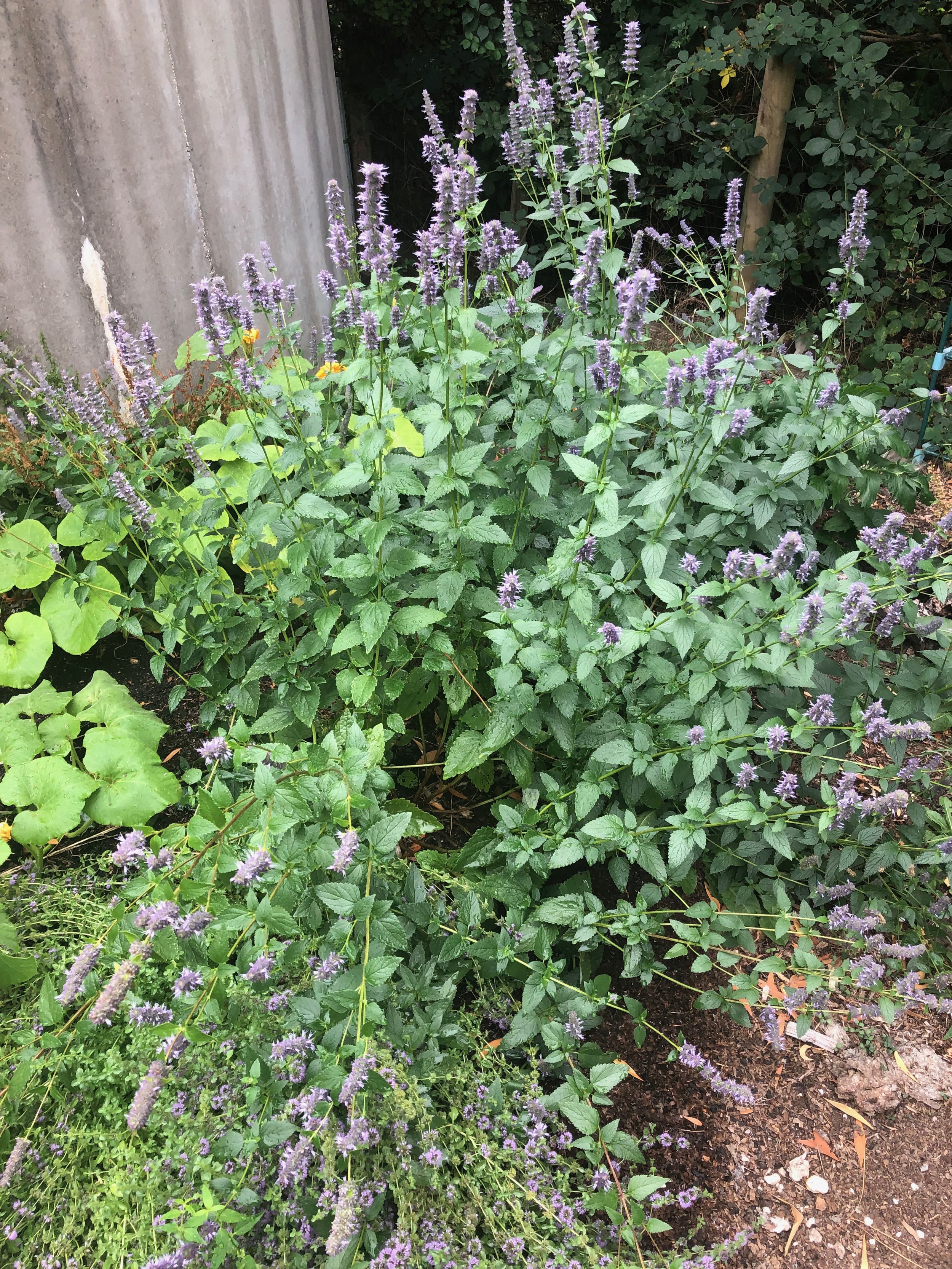 Image 1 of 3
Image 1 of 3

 Image 2 of 3
Image 2 of 3

 Image 3 of 3
Image 3 of 3




Korean Mint Seeds
Korean Mint (Agastache rugosa), Huo-xiang, Korean Licorice Mint
Description:
Korean mint is a perennial herbaceous plant native to Korea and China, valued for its attractive foliage, aromatic leaves, and vibrant flowers. It is a medium-sized herb that typically grows to a height of 3 to 4 feet (90 to 120cm). It features lance-shaped, toothed leaves with a pleasant fragrance that resembles a combination of mint and anise. The leaves are typically green, but some cultivars may have hints of purple or bronze. Korean mint produces dense spikes of tubular flowers that are typically purple or lavender, attracting pollinators like bees and butterflies. The flowers add a splash of colour to the garden and are often used in floral arrangements.
Growing Conditions:
Climate: cool-temperate to subtropical climates; prefers moderate summers and cool winters.
Position: full sun to partial shade.
Soil: well-draining, fertile and loamy soil but will also tolerate sandy or clay soil types; ideal soil pH range is slightly acidic to neutral (around 6.0 to 7.5).
Water: moderate water needs; water the plant regularly to keep the soil consistently moist but not waterlogged; somewhat drought-tolerant once established.
Spacing: space the plants approximately 12 to 18 inches (30 to 45cm) apart to allow them room to spread.
Propagation: sow the seeds indoors 6 to 8 weeks before the last frost date or directly into the garden bed in early spring. Scatter the tiny seeds with soil and tamp securely (light-dependent germination usually within 1 - 2 weeks), keeping them warm and moist. Thin the seedlings out or transplant after second set of true leaves develop.
Harvest:
Leaves: harvest the leaves when they are young and vibrant, typically during the growing season before the plant starts to flower. The leaves contain the highest concentration of essential oils at this stage.
Flowers: Harvest flowers when they are fully open and at their peak freshness.
~150 seeds per pack
Korean Mint (Agastache rugosa), Huo-xiang, Korean Licorice Mint
Description:
Korean mint is a perennial herbaceous plant native to Korea and China, valued for its attractive foliage, aromatic leaves, and vibrant flowers. It is a medium-sized herb that typically grows to a height of 3 to 4 feet (90 to 120cm). It features lance-shaped, toothed leaves with a pleasant fragrance that resembles a combination of mint and anise. The leaves are typically green, but some cultivars may have hints of purple or bronze. Korean mint produces dense spikes of tubular flowers that are typically purple or lavender, attracting pollinators like bees and butterflies. The flowers add a splash of colour to the garden and are often used in floral arrangements.
Growing Conditions:
Climate: cool-temperate to subtropical climates; prefers moderate summers and cool winters.
Position: full sun to partial shade.
Soil: well-draining, fertile and loamy soil but will also tolerate sandy or clay soil types; ideal soil pH range is slightly acidic to neutral (around 6.0 to 7.5).
Water: moderate water needs; water the plant regularly to keep the soil consistently moist but not waterlogged; somewhat drought-tolerant once established.
Spacing: space the plants approximately 12 to 18 inches (30 to 45cm) apart to allow them room to spread.
Propagation: sow the seeds indoors 6 to 8 weeks before the last frost date or directly into the garden bed in early spring. Scatter the tiny seeds with soil and tamp securely (light-dependent germination usually within 1 - 2 weeks), keeping them warm and moist. Thin the seedlings out or transplant after second set of true leaves develop.
Harvest:
Leaves: harvest the leaves when they are young and vibrant, typically during the growing season before the plant starts to flower. The leaves contain the highest concentration of essential oils at this stage.
Flowers: Harvest flowers when they are fully open and at their peak freshness.
~150 seeds per pack
Korean Mint (Agastache rugosa), Huo-xiang, Korean Licorice Mint
Description:
Korean mint is a perennial herbaceous plant native to Korea and China, valued for its attractive foliage, aromatic leaves, and vibrant flowers. It is a medium-sized herb that typically grows to a height of 3 to 4 feet (90 to 120cm). It features lance-shaped, toothed leaves with a pleasant fragrance that resembles a combination of mint and anise. The leaves are typically green, but some cultivars may have hints of purple or bronze. Korean mint produces dense spikes of tubular flowers that are typically purple or lavender, attracting pollinators like bees and butterflies. The flowers add a splash of colour to the garden and are often used in floral arrangements.
Growing Conditions:
Climate: cool-temperate to subtropical climates; prefers moderate summers and cool winters.
Position: full sun to partial shade.
Soil: well-draining, fertile and loamy soil but will also tolerate sandy or clay soil types; ideal soil pH range is slightly acidic to neutral (around 6.0 to 7.5).
Water: moderate water needs; water the plant regularly to keep the soil consistently moist but not waterlogged; somewhat drought-tolerant once established.
Spacing: space the plants approximately 12 to 18 inches (30 to 45cm) apart to allow them room to spread.
Propagation: sow the seeds indoors 6 to 8 weeks before the last frost date or directly into the garden bed in early spring. Scatter the tiny seeds with soil and tamp securely (light-dependent germination usually within 1 - 2 weeks), keeping them warm and moist. Thin the seedlings out or transplant after second set of true leaves develop.
Harvest:
Leaves: harvest the leaves when they are young and vibrant, typically during the growing season before the plant starts to flower. The leaves contain the highest concentration of essential oils at this stage.
Flowers: Harvest flowers when they are fully open and at their peak freshness.
~150 seeds per pack